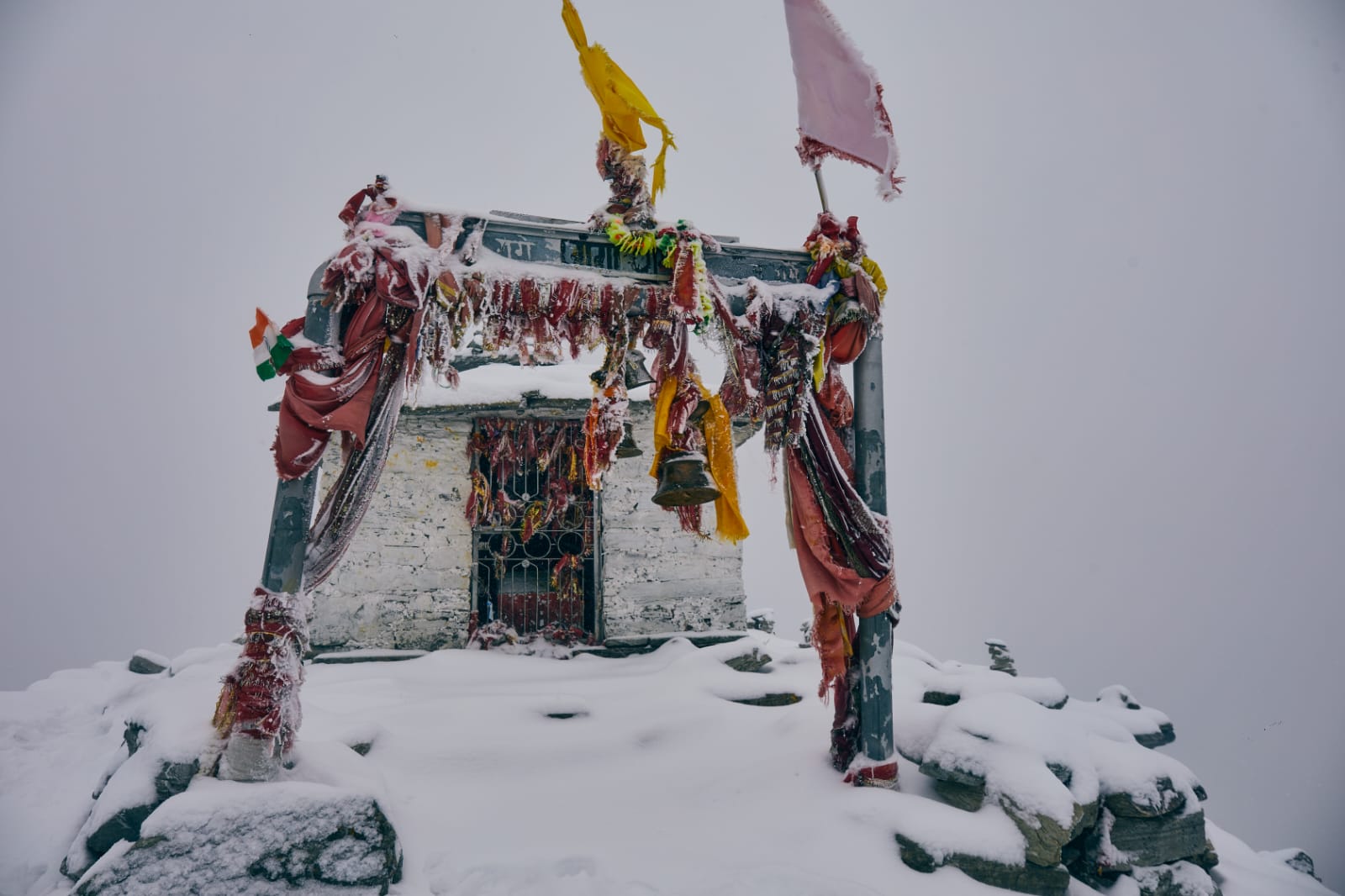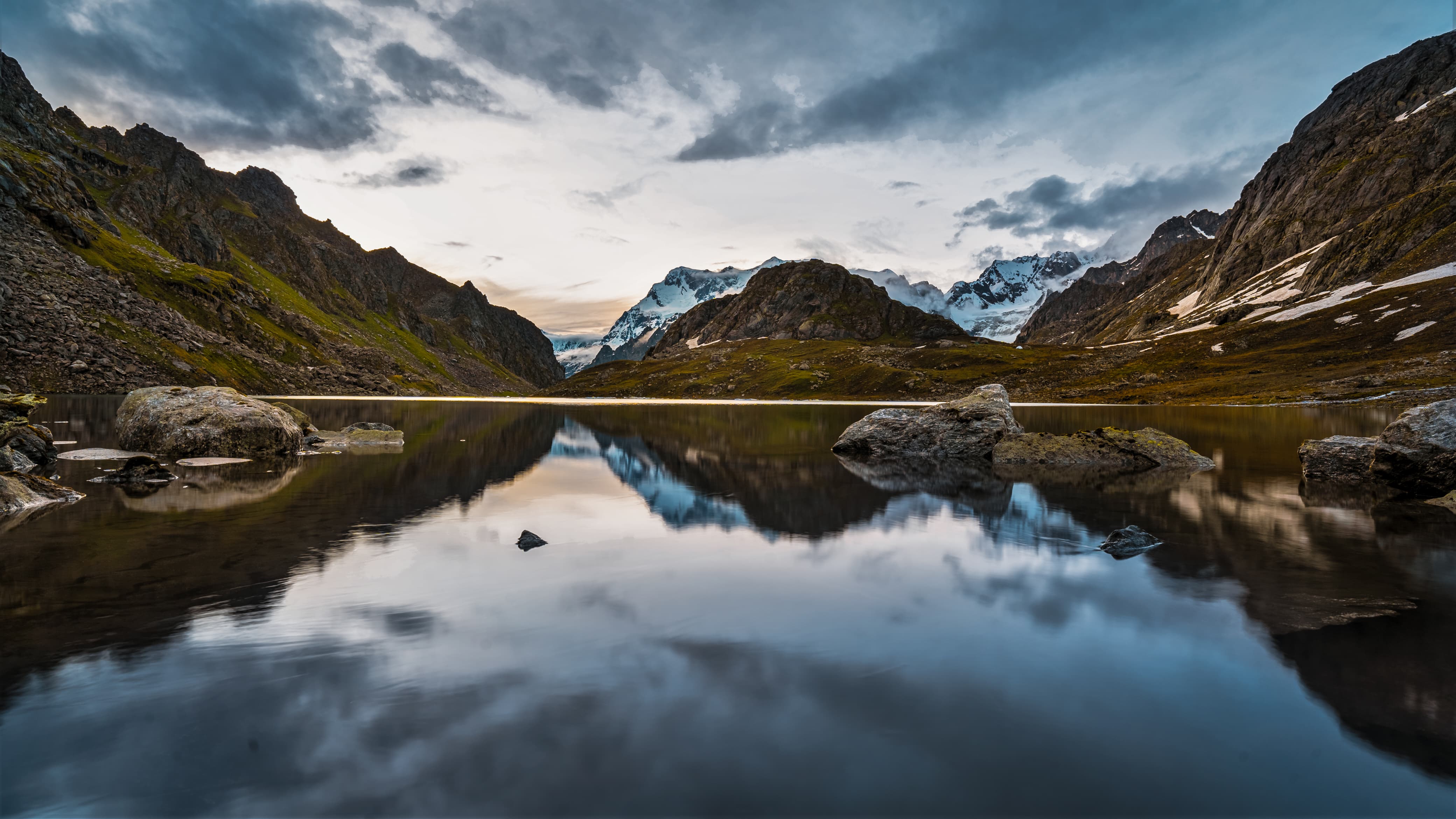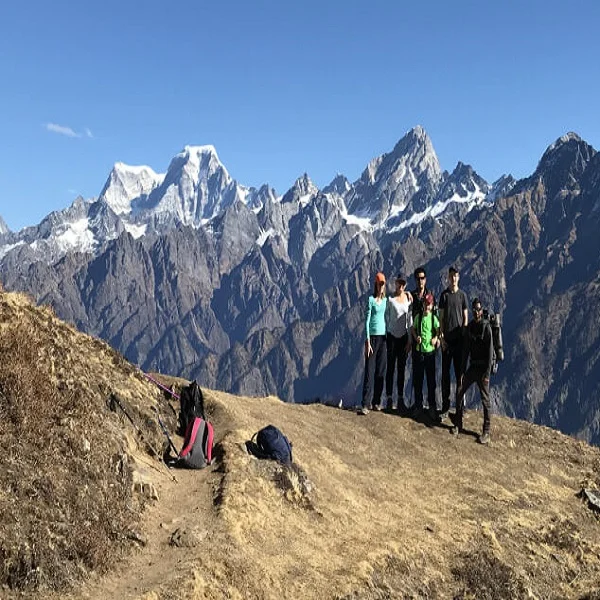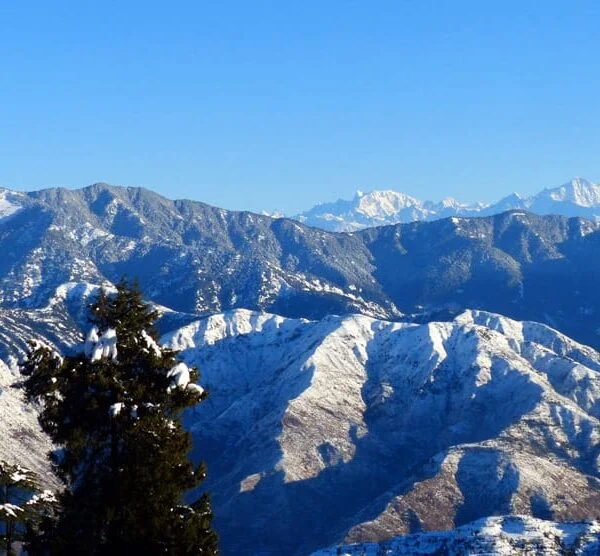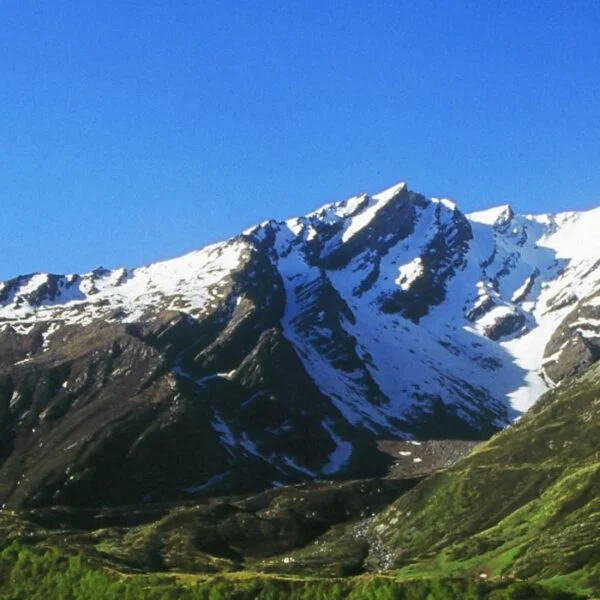Chopta Tungnath Chandrashila
5 Days 25 Group
History of Chopta: The Mini Switzerland of India
Perched in the heart of the Garhwal Himalayas in Uttarakhand, Chopta is a picturesque hill station that has earned itself the nickname of “Mini Switzerland of India.” It is famous for its emerald green meadows, towering icy mountains, and tranquil atmosphere. Not to mention, Chopta is also home to the chief abode of Shiva, the Tungnath Temple, which holds the record for being the highest Shiva temple in the world. The town attracted attention from both trekkers and nature enthusiasts, but that is a recent development. Long before this growth, Chopta had been a quiet place, yet it was rich in culture and religious importance.
Ancient Spiritual Connections
Chopta is a subdivision of Kedarnath Wildlife Sanctuary and has its origins in Hindu lore. It has a deep mythological connection with the Panch Kedar, a group of five magnificent temples of Shiva which are Kedarnath, Tungnath, Rudranath, Madhyamaheshwar and Kapleshwara. The myth goes that after the war of the Mahabharata, the Pandavas tried to seek Lord Shiva’s blessings to cleanse their sins. To their misfortune, Shiva decided to avoid them, and to do so, turned into a bull and concealed himself in the Garhwal region of the Himalayas. It is believed that the arms of the bull appeared at this place called Tungnath.
The SPL endows Tungnath with spiritual importance, making Chopta, which serves as a base for the trekking path leading to the temple, a point of interest for sadhus, saints, and pilgrims over the decades. Despite the absence of written accounts, centuries of wandering folklore vividly captures the existence with pilgrimages depicting the region.
History of Tungnath Temple
Tungnath Temple is one of the five Panch Kedar temples, dedicated to Lord Shiva. Situated at an altitude of approximately 3,680 meters (12,073 feet), it is revered as the world's highest Shiva temple and holds wonderful ellegance of Garhwal Himalayas in Uttarakhand. Furthermore, the temple has deep roots in India’s mythological and religious tells for which, pilgrims from every corner of the world reside there. Myths suggest that Tungnath offers not only a pilgrimage point, but also an enriching encounter with Himalayan serenity, Shri-shri bhava and rich heritage of India.
Mythological Origins
Temples of Tungnath is well interlinked with the Mahabharata epic story. As per the stories shared, the Pandavas after the fierce battle of Kurukshetra were inclined with deep guilt of killing their kin, therefore, they sought the blessings of Lord Shiva to get absolved of their sins. Yet Lord Shiva was also not ready to forgive them easily, so he turned into a bull and went to the Himalayas.
There is a story that after Lord Shiva, the bull went to the world below the ground and after much changed reappeared in five pictures in five different places. The explanation goes, that at Tungnath, the upper limbs of Lord Shiva were found, at Kedarnath, it was the hump, while at Madhyamaheshwar, the navel; the face was found at Rudranath, whereas the hair was at Kalpeshwar. These pious centers of Varanasi that got together got the name 'Panch Kedar' which is one of the most important parts of the Hindu religion in the region.
History of Chandrashila: The Moon Rock Summit
Chandrashila meaning “Moon Rock” in Sanskrit, is a stunning peak located in the Garhwal Himalayas, Uttrakhand, India. Positioned at an elevation of about 13,000 feet (4000 meters) above sea level, Chandrashila provides one of the most astounding panoramic vistas of the Himalayan ranges which include Nanda Devi, Trishul, Kedar Dome, Bandarpunch and Chaukhamba.
However, more than its visual appeal, Chandrashila has religious, historical, and cultural significance that make it a holy place for pilgrims, hikers, and spiritual seekers alike.
Mythological Significance of Chandrashila
The name 'Chandrashila' comes from two Sanskrit words - Chandra meaning 'moon', and Shila meaning 'rock'. According to Hindu mythology, Lord Rama defeated the Demon King Ravana and later meditated at this peak for forgiveness for the sin of killing Ravana, who was a Brahmin by birth. This act of penance of Lord Rama in this high-altitude location is one of the oldest mentions of Chandrashila in ancient legends.
As well, another legend concerns Chandra, the Moon God. It is thought that Chandra was cursed by his father-in-law, Daksha, to wither away. According to popular folklore, Chandra is said to have meditated at this peak, which enabled him to escape the curse and regain his luminosity. Thus, folklore suggests the peak is where Chandra resides and the boulder at the peak is regarded as holy.
Chopta, Tungnath Temple, and Chandrashila: Altitude, Region, and Difficulty
The Garhwal Himalayan region has always been adventurous and highly revisited for spiritual retreats. The trek from Chopta to Tungnath Temple and subsequently to Chandrashila Peak merges all the features of nature and human emotion artfully and contains within itself both a symbolic appeal as well as some challenge. Here are some clarifying details regarding the height, area, and the magnitude of difficulty of this memorable journey.
Altitude Details
Chopta:
Altitude – 2,680 meters (8,790 feet) above sea level
Chopta is a serene hill station and the base for the Tungnath-Chandrashila trek. It's often referred to as the "Mini Switzerland of India" due to its lush meadows, scenic views, and tranquil environment.
Tungnath Temple:
Altitude – 3,680 meters (12,073 feet) above sea level
Tungnath is the highest Shiva temple in the world and the third of the Panch Kedar shrines. Despite its altitude, the path to the temple is well-paved and frequented by devotees and trekkers alike.
Chandrashila Peak:
Altitude – 4,000 meters (13,123 feet) above sea level
The final leg of the trek, from Tungnath to Chandrashila, takes you to a summit that offers a 360-degree panoramic view of majestic Himalayan peaks like Nanda Devi, Trishul, Chaukhamba, and Kedar Dome.
Region Overview
The entire trek is located in the Rudraprayag district of Uttarakhand, nestled within the Garhwal Himalayas. The region is part of the Kedarnath Wildlife Sanctuary, which is home to diverse flora and fauna including musk deer, monal (state bird of Uttarakhand), and rhododendron forests. Access Points:
Nearest Railhead: Rishikesh (about 200 km from Chopta)
Nearest Airport: Jolly Grant Airport, Dehradun (226 km approx.)
Road Connectivity: Good road connectivity from Rishikesh, Haridwar, and Dehradun to Chopta via Ukhimath.
Best Time to Visit:
Spring/Summer (April – June): Pleasant weather, blooming rhododendrons, clear skies.
Autumn (September – November): Clear views of snow-clad peaks, ideal for trekking.
Winter (December – February): Snow-covered trails, good for snow trekkers (Chandrashila is difficult in heavy snow).
Trek Difficulty
Level The Chopta-Tungnath-Chandrashila trek is often categorized as an easy to moderate trek, making it ideal for beginners as well as experienced trekkers. Chopta to Tungnath: Distance: ~3.5 km (one way)
Time: 2 – 3 hours
Trail Type: Steady, paved path with moderate ascent
Difficulty: Easy to Moderate
Suitable for families, kids (above 7–8 years), and senior citizens who are moderately fit.
Tungnath to Chandrashila: Distance: ~1.5 km (one way)
Time: 1 – 2 hours
Trail Type: Steep ascent, rocky patches, can be slippery in snow or rain
Difficulty: Moderate to Difficult
This section demands more stamina, especially in winter. Proper trekking shoes and warm clothing are essential.
Tungnath Chopta Chandrashila Itinerary (5 Days):
Day 1: Arrival in Haridwar / Rishikesh
- Arrive in Haridwar or Rishikesh.
- Check-in at the hotel.
- Explore local sights, such as Triveni Ghat and Laxman Jhula.
- Night stay in Haridwar/Rishikesh.
Day 2: Haridwar/Rishikesh to Chopta
- Drive from Haridwar/Rishikesh to Chopta (approx. 8-9 hours).
- Enjoy scenic views of the Himalayas during the journey.
- Check-in at a guesthouse or campsite in Chopta.
- Night stay in Chopta.
Day 3: Chopta to Tungnath
- Trek to Tungnath Temple (approx. 3.5 km).
- Visit the ancient Tungnath Temple, the highest Shiva temple in the world.
- Continue trekking to Chandrashila (approx. 1 km) for panoramic views.
- Return to Chopta for the night.
Day 4: Chopta – Deoria Tal
- Trek to Deoria Tal (approx. 2.5 km).
- Enjoy the serene lake and stunning reflections of the Himalayas.
- Explore the area and relax by the lake.
- Return to Chopta for the night.
Day 5: Chopta to Haridwar/Rishikesh
- Drive back to Haridwar or Rishikesh.
- Check-in at the hotel.
- Leisure time for shopping or exploring local cafes.
- Night stay in Haridwar/Rishikesh.
